By Martin Pauly ✈ March 5, 2023
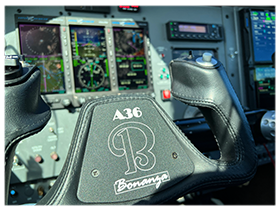

You have seen Martin’s Bonanza in his videos – here you can learn more.
Registration number: N70TB
Serial number: E1289
Manufacturer: Beechcraft (today part of Textron Aviation)
Length: 27’6″. Width: 33’6″
Wing area: 181.0 square feet
Number of seats: 6
Typical cruise speed (true air speed, lean of peak): 167 knots – 192 mph – 309 km/h
Empty weight: 2,370 lbs
Maximum take-off weight: 3,700 lbs
Engine: Continental Motors IO-550B, 300 HP
Propeller: Hartzell Scimitar
Avionics and Instrument Panel
The avionics and primary flight instruments went through a major upgrade project from January 2022 through February 2023. That’s a long time – due to the fact that N70TB was the testbed for development and verification of the digital autopilot interface between the Aspen PFD and the Garmin GFC600 autopilot. The equipment and wiring was installed by Gardner Lowe Aviation Services in Peachtree City, GA (at Falcon Field/KFFC).
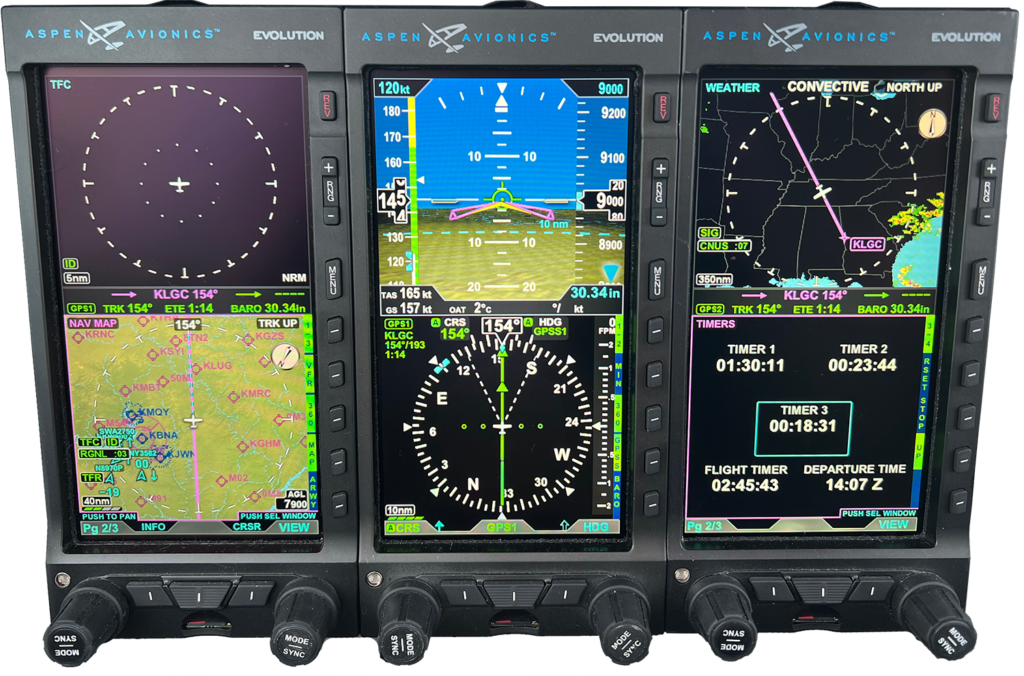
EFIS: Electronic Flight Instrument System
The Aspen three-screen system provides a lot of information in a compact space. Many people ask “why not go all Garmin”, and while Garmin certainly has very nice EFIS products, but the configuration options of a multi-screen Aspen system are terrific – as is the redundancy, because my right Aspen (Evolution MAX 1000 MFD) reverts to a full PFD at the push of a button should my center display (Evolution MAX 1000 PFD) ever have a hiccup. So I can legally keep flying until the main PFD can be fixed.
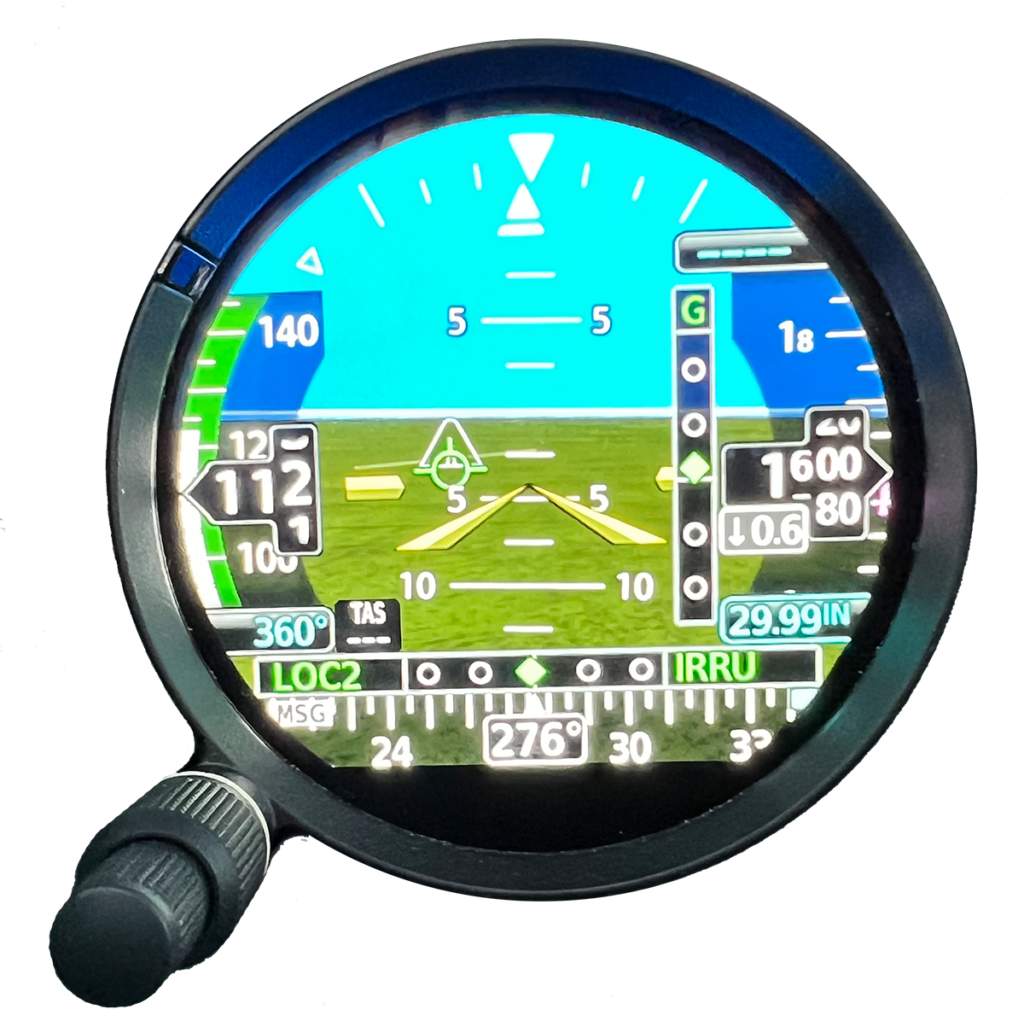
A Garmin GI-275 serves as a backup instrument for attitude, airspeed, altimeter, and a lot more. While a two-or-more screen Aspen system legally doesn’t require an independent backup, I believe in a dissimilar backup for this critical function – meaning a backup system which does not share any hardware or software design data with the primary system.
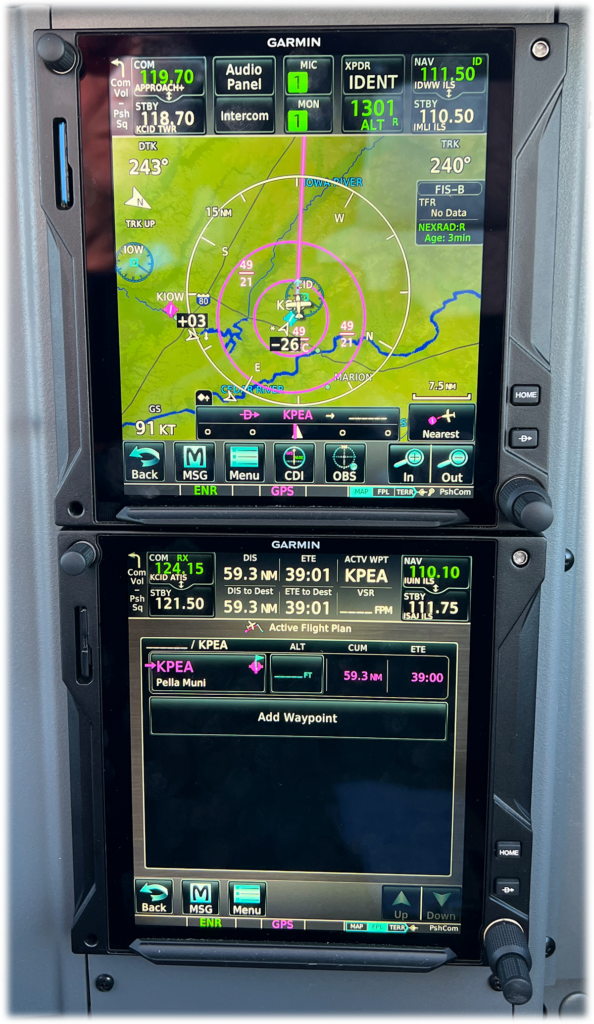
GPS/NAV/COM
What’s better than one GPS/NAV/COM? Well, two, of course! When I upgraded to the Garmin GFC600 autopilot, I replaced the Avidyne IFDs (a 550 and a 440) with two large Garmin GTN units. You may call this overkill, but I believe in redundancy for this important function. I also learned the hard way that in my prior setup, which consisted of a large IFD550 and a small IFD440, I rarely used the small unit because the larger screen made everything so much easier. So when I selected the GTNs, I knew I wanted two large ones.

Autopilot
When I bought N70TB in 2012, it had a Century III autopilot. It was in pretty bad shape, but I had it repaired and then it worked well for many years, providing roll, pitch and pitch trim functions. Still, the Century III is an old design, and when it showed signs of old age again, I started the search for a worthy successor – which I documented in this video.
The result is the Garmin GFC600, which in my assessment is the best retrofit autopilot available today for light general aviation aircraft. The runner-up is the Garmin GFC500, which is available for a broader range of aircraft than the 600. But the A36 Bonanza is on the GFC600 approved model list, so I was able to go for my number one choice.
And it did not disappoint. It handles the airplane smoothly and solidly. It flies an approach (ILS or GPS based) better than I can, and it can transition to a coupled (!) missed approach – meaning if I have to go missed, all I need to do is add power and push the TOGA (take-off/go-around) button near the throttle. The autopilot does the rest. My installation has four servos for roll, pitch, pitch trim, and a yaw damper. The yaw damper makes sure the ball stays centered throughout the flight.
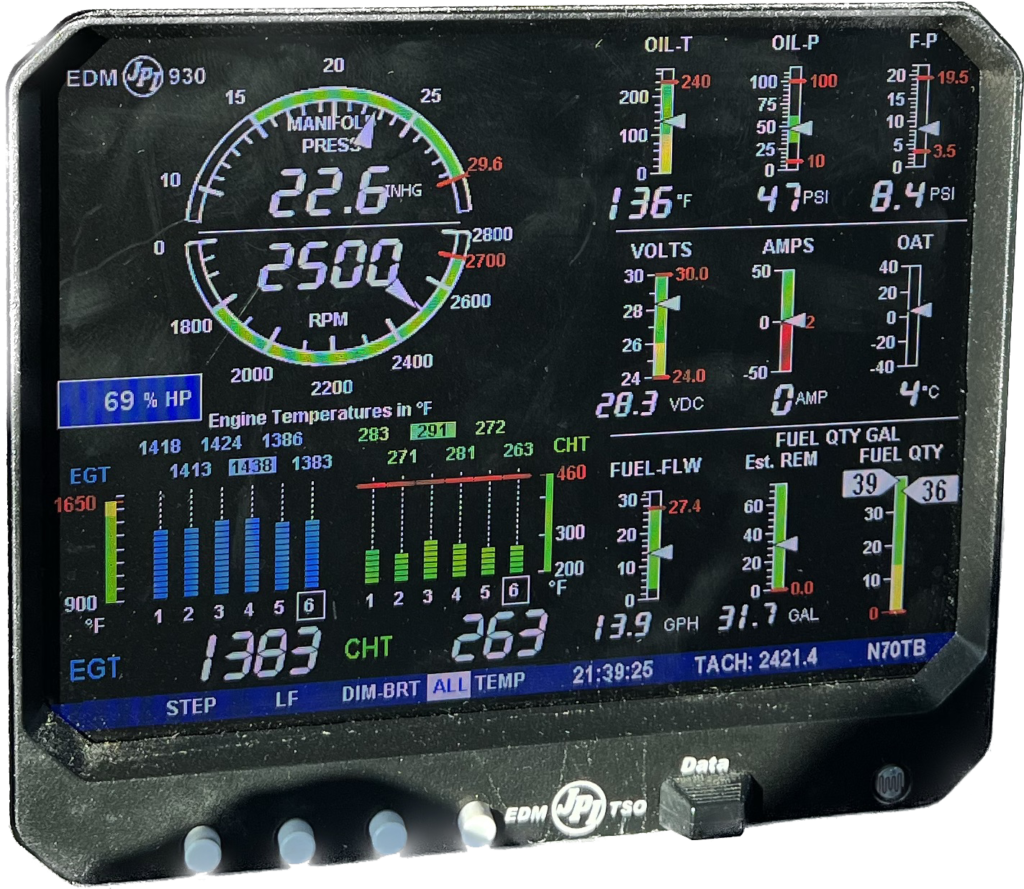
Engine Instruments
The EDM930 from JPI is pretty much the only instrument I carried forward from my previous instrument panel. I love the easy-to-read format and depiction of all engine, fuel and electrical system parameters. Everything is always in the same place, so I never have to look for any information.
